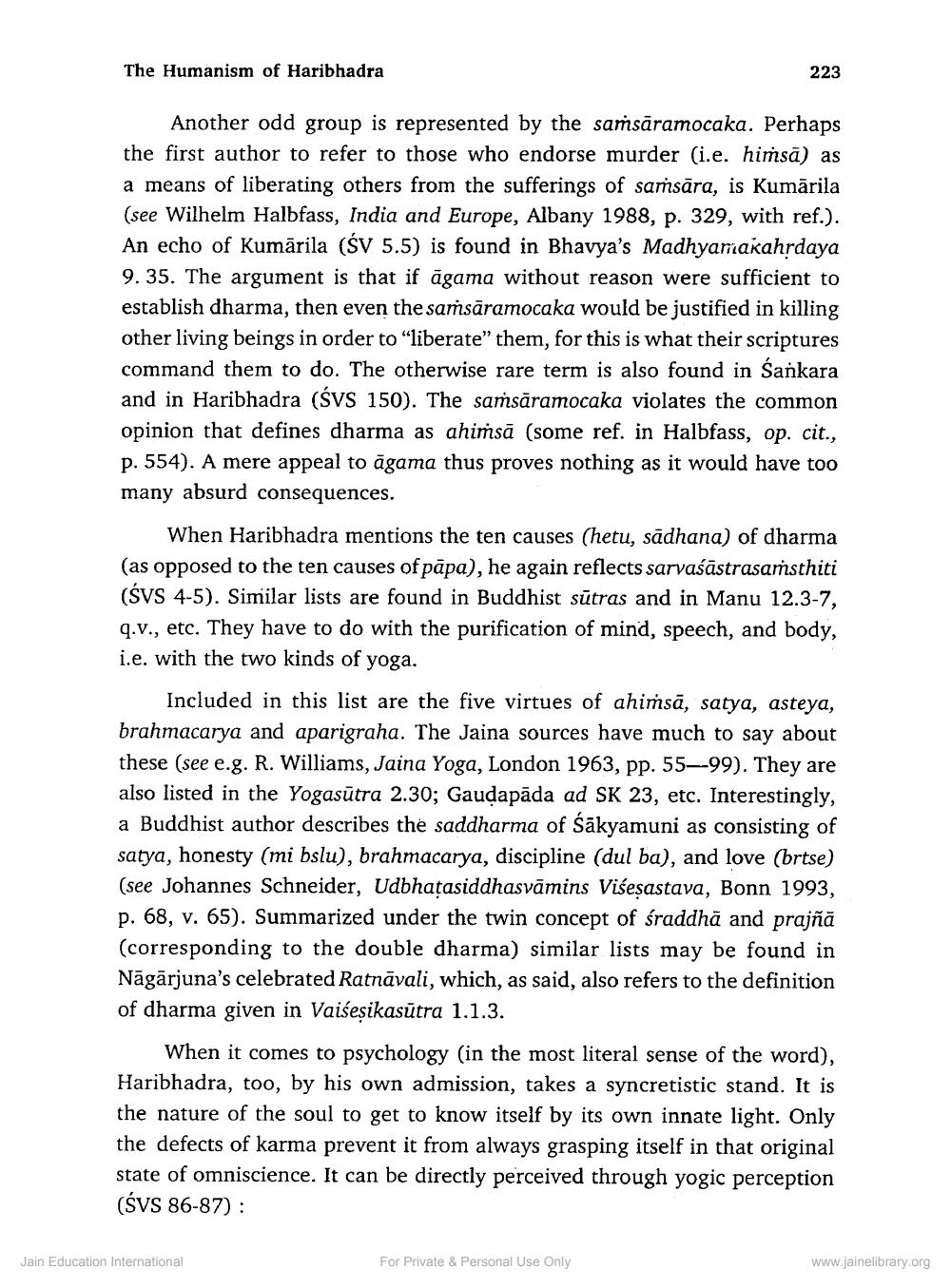________________
The Humanism of Haribhadra
223
Another odd group is represented by the saṁsāramocaka. Perhaps the first author to refer to those who endorse murder (i.e. hiṁsā) as a means of liberating others from the sufferings of saṁsāra, is Kumārila (see Wilhelm Halbfass, India and Europe, Albany 1988, p. 329, with ref.). An echo of Kumārila (ŚV 5.5) is found in Bhavya's Madhyamakahrdaya 9.35. The argument is that if agama without reason were sufficient to establish dharma, then even the saṁsāramocaka would be justified in killing other living beings in order to “liberate” them, for this is what their scriptures command them to do. The otherwise rare term is also found in Sankara and in Haribhadra (ŚVS 150). The saṁsāramocaka violates the common opinion that defines dharma as ahiṁsā (some ref. in Halbfass, op. cit., p. 554). A mere appeal to āgama thus proves nothing as it would have too many absurd consequences.
When Haribhadra mentions the ten causes (hetu, sādhana) of dharma (as opposed to the ten causes of pāpa), he again reflects sarvaśāstrasaṁsthiti (ŚVS 4-5). Similar lists are found in Buddhist sūtras and in Manu 12.3-7, q.v., etc. They have to do with the purification of mind, speech, and body, i.e. with the two kinds of yoga.
Included in this list are the five virtues of ahiṁsā, satya, asteya, brahmacarya and aparigraha. The Jaina sources have much to say about these (see e.g. R. Williams, Jaina Yoga, London 1963, pp. 55–-99). They are also listed in the Yogasutra 2.30; Gaudapāda ad SK 23, etc. Interestingly, a Buddhist author describes the saddharma of Śākyamuni as consisting of satya, honesty (mi bslu), brahmacarya, discipline (dul ba), and love (brtse) (see Johannes Schneider, Udbhatasiddhasvāmins Visesastava, Bonn 1993, p. 68, v. 65). Summarized under the twin concept of śraddhã and prajñā (corresponding to the double dharma) similar lists may be found in Nāgārjuna's celebrated Ratnāvali, which, as said, also refers to the definition of dharma given in Vaiśesikasūtra 1.1.3.
When it comes to psychology (in the most literal sense of the word), Haribhadra, too, by his own admission, takes a syncretistic stand. It is the nature of the soul to get to know itself by its own innate light. Only the defects of karma prevent it from always grasping itself in that original state of omniscience. It can be directly perceived through yogic perception (ŚVS 86-87):
Jain Education International
For Private & Personal Use Only
www.jainelibrary.org




